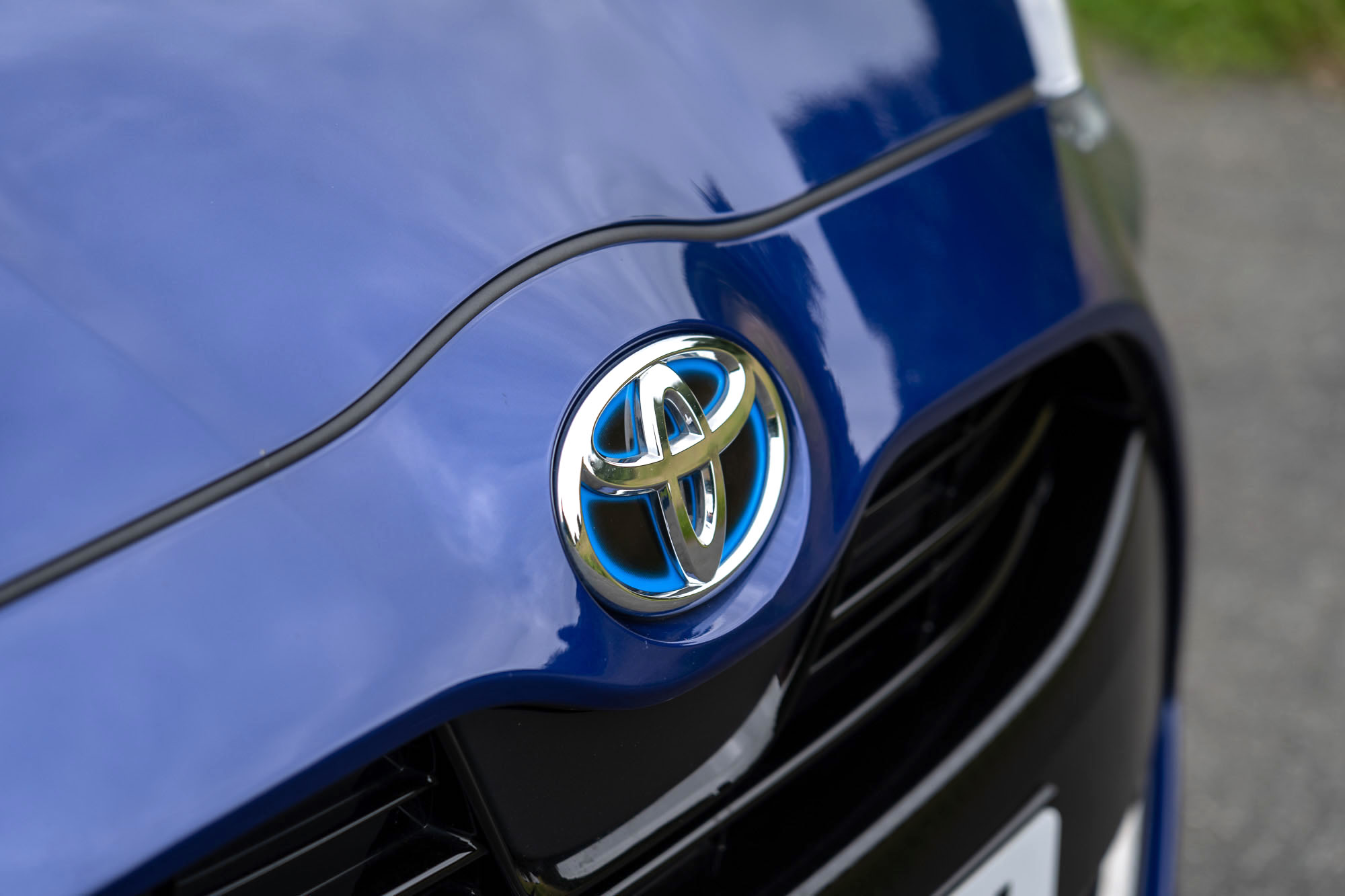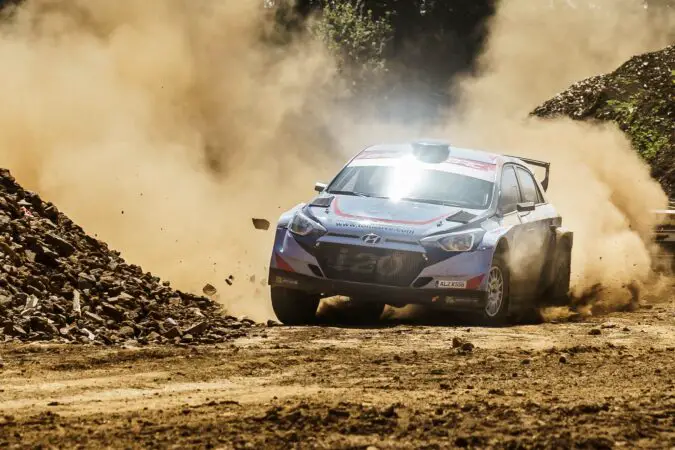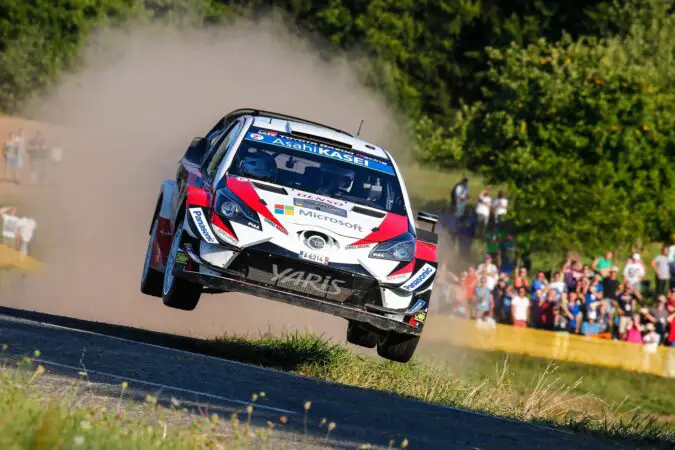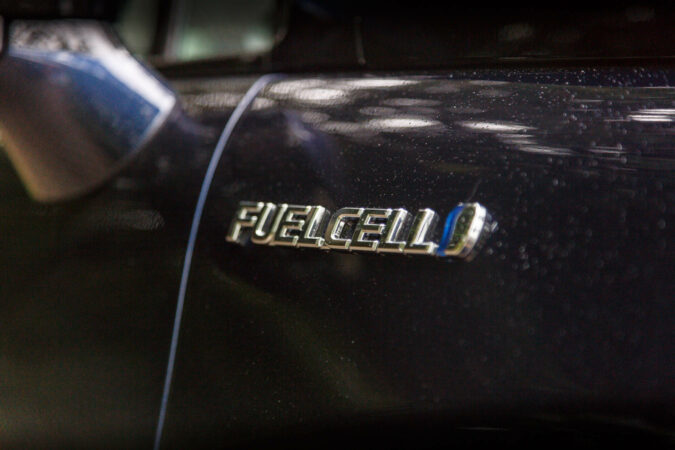The Toyota Celica GT-Four—often called the GT4 Celica—was the high-performance version of the Celica liftback made from 1986 to 1999. It was the road-going version of Toyota’s contender for the World Rally Championship (WRC) and a rather successful one.
There are multiple generations of this car, with the most popular one being the ST205. Although its reputation was a rather bad one. We’re going to discuss the Celica GT-Four in this post, here’s everything you need to know:
Toyota Celica: A Quick History
Celica is the nameplate Toyota uses for their lineup of coupe, liftback, and convertible cars from the 197os to the mid-2000s. They introduced the first generation in 1970, based on the Toyota Carina.
The idea of it was to make a compact car that was based on a reliable platform. But with an emphasis on style and driving enjoyment. Think Corolla but with two doors and better styling, although the Celica was technically based on a platform larger than the Corolla.
Anyway, it was an immediate success. Partly because it was reliable and fun to drive. And partly because it was a good-looking car, the first few generations kind of like a smaller Mustang. The Celica remained in production until 2006, spanning seven generations.
Since there are so many of them, we won’t get into the details of each generation. Instead, let’s focus on the GT4 Celica variant. But to understand how the GT4 came about, you need to understand more about rallying and homologations:
World Rally Championship And Homologation Cars
The first car to adorn the GT-Four name was introduced in 1986. Previous models all came with rear-wheel drive, whilst the ones after 1985 came with front-wheel drive as standard. However, as the GT-Four name suggests, this version had four-wheel drive instead. For one simple reason: to go compete in the World Rally Championship (WRC).
GT4 Celicas are what we call homologation cars. If you’re not familiar, carmakers that wish to enter their car in rallying had to make a road-going version of their rally contender. The term ‘homologation’ itself means ‘to approve’ or ‘clarify’. But why was this necessary?
In a nutshell, the Fédération Internationale de l’Automobile (FIA)—which is the WRC’s governing body—didn’t want carmakers to create purpose-built supercars competing in WRC. They prevented this by requiring carmakers to make a road-going counterpart of their WRC contender. This road-going version has to be available for sale to the general public.
This means their rally car will be limited by the design of the road-going version. Since road cars have to meet certain regulations, this limits the performance of the rally car along with other rules and regulations. Essentially, this was the FIA’s effort in leveling the playing field.
It was also an effort to boost views for the racing league. As it’s usually more interesting for spectators to watch racing cars that resemble road cars that they can actually buy.
Note that this rule doesn’t just exist for rallying, but many other motorsports also require this such as LeMans and NASCAR. While the term ‘homologation’ itself has a broad meaning. In the car world, the term ‘homologation car’ is used to refer to road-going versions of race cars.
Death Of The Homologation Car
Homologation cars are now a thing of the past. Carmakers are no longer required to make road-going versions of their race cars; be it in WRC, LeMans, NASCAR, and other racing leagues.
Yes, rally cars, in particular, still look like road-going versions of the cars that these carmakers sell today. Take, for example, the Hyundai i20 R5 below. While it looks like the normal Hyundai i20 hatchback—albeit with wings and other outrageous aero parts—it shares almost nothing in common with the road car.
These cars almost always use a purpose-built chassis, wrapped up in the body that looks like an existing road car, with a monstrous engine that we mere mortals will never get to drive. Sure, the chassis and many other parts still have to follow regulations. But the homologation rule simply no longer exists.
Mostly because these cars are incredibly expensive to design and produce, to the point where it could bankrupt the carmaker. Additionally, there just aren’t that many people who want to buy these cars. Many of us car enthusiasts do, but often, they make no sense or are just too expensive.
In a nutshell, the demand for these homologation cars is often too low. Since the carmakers can’t sell many of them, it reduces their incentive to participate in a racing league should they be required to make a homologation car.
GT4 Celica Generations
So, the Celica GT-Four was born from the WRC’s homologation rules back in the ’80s and ’90s. There are three generations of them, let’s take a look at these homologation-special GT4 Celicas:
1. GT4 Celica ST165
Note that the ST165 was not the first homologation Celica. It was actually the 1983 TwinCam Turbo Group B rally car. However, the ST165 was the first Group A (a slower group) homologation Celica. And carmakers were required to make 5,000 units of these, rather than just 250 of the Group B rally cars.
Anyway, the ST165 has a 2.0L 3S-GTE four-cylinder turbo engine. The engine makes between 182 and 190 horsepower, depending on model year and market, and 184lb-ft of torque. It comes with a 5-speed manual transmission and four-wheel drive as standard.
This isn’t the most popular iteration of the GT-Four cars, but it had a successful endeavor in the world of rallying. The ST165 won a total of 13 WRC series. And this was the car that legendary rally driver, Carlos Sainz, drove to win the 1990 WRC driver’s title. And yes, he’s the father of current Ferrari Formula 1 driver (speaking of, check out our explainer on Indy Car vs Formula 1), Carlos Sainz Jr.
2. GT4 Celica ST185
Perhaps the generation that more people are familiar with is the ST185. Partly thanks to its pop-up headlamps. But mostly thanks to the red-green on white Castrol livery. Introduced in 1989, this was Toyota’s contender for the 1992 WRC season up until 1994.
Of course, a good-looking livery isn’t enough for a race car to be famous, it needs to win races as well—and won races it most certainly did. In fact, it was wildly successful. The ST185 won a total of 16 WRC series, with an additional 3 wins in the W2L series (WRC’s 2.0L engine competition).
This was also the car that helped not only Carlos Sainz to win a championship in 1992 but also helped Juha Kankkunen and Didier Auriol to win the driver’s title in 1993 and 1994 respectively. Additionally, the car won the WRC manufacturer’s title in ’93 and ’94. To say that this car was successful would be an understatement.
How about the road-going version then? It had the same 2.0L 3S-GTE four-cylinder turbo engine just like the ST165. However, thanks to a ceramic turbine and adjustments to the ignition, it now makes 222 horsepower and 224lb-ft of torque.
All of them came with a 5-speed manual transmission, albeit slightly different ones over the years. And of course, a four-wheel-drive system resembling the rally version of the car.
The car was produced from 1989 to 1993, with several different versions available. All of them are two-door liftbacks, but certain production models had a wider body, mostly ones produced after August 1991.
3. GT4 Celica ST205
Following the success of the ST185 was the ST205. This is arguably Toyota’s most famous Celica, but it does have a notorious reputation in the rallying world. We’ll get into that later, let’s take a look at the road version first:
Like the previous generation, it still had a 2.0L 3S-GTE four-cylinder turbo engine. Now making 239 horsepower for the export model, and 252 horsepower for the Japanese version.
There were many performance upgrades in this generation. Such as an aluminum hood to save weight, a better turbocharger, and a water spray for the intercooler. However, the most important and exciting upgrade was the addition of an anti-lag system.
Anti-lag is a system that spins the turbines inside the turbocharger. The problem with turbochargers is that it takes time for them to spin or ‘spool’. This is because they rely on the flow of exhaust gases to spool, and it needs the engine to be at a certain RPM for the flow to be powerful enough to spool the turbo.
Once the turbo spools, then it can provide the engine with more air leading to more power. Since it takes time, there’s a delay in power delivery. Most turbos start spooling at 3,000rpm, this is what’s known as a turbo lag.
An anti-lag system fixes this problem by spooling the turbo even when the engine RPM drops. In the ST205, the system works by using a bypass inlet to allow fresh air into the exhaust manifold to keep the turbo spinning, therefore eliminating the turbo lag.
Note that you will need an ECU-tune to activate the system, as Toyota only provides the hardware. The problem with anti-lag is that they can produce extreme heat, thereby reducing the lifespan of the turbo and even the engine.
GT4 Celica: WRC Controversy
So, what’s all this WRC controversy is about with the ST205? Well, the FIA mandated Group A WRC cars to have a turbo restrictor plate in 1994. The FIA says that this was a safety measure, the intention was to limit the power output of the cars so that they won’t be too powerful, too fast, and too much to handle on a rally stage.
Toyota obviously complied with this rule, as the Celica wouldn’t be allowed to compete in the first place if it didn’t have the restrictor plate. However, this left the ST205 feeling a bit clunky and down on power. To combat this, much like many other racing teams in history, Toyota Team Europe found a way to, shall we say, bend the rules a bit.
Using a series of springs and washers, Toyota Team Europe found a way for the restrictor to disengage when driving. This means the effect of the restrictor is gone, and the ST205 could have an extra horsepower output of up to 50 horsepower. Plenty enough to make a difference when racing.
The FIA caught wind of this in 1995 in Catalunya, Spain. Max Mosley, the FIA’s president at the time said “it’s the most ingenious thing I have seen in 30 years of motorsport.”
While they acknowledged how clever it was, the FIA wasn’t having any of it. So, they decided to ban Toyota from the 1995 and 1996 World Rally Championship. They came back in 1997, but this time their contender was the Corolla WRC hatchback.
The ST205 made a brief return to WRC in 1998, but it never saw the success of its predecessors. And in 2000, Toyota pulled out of the championship and has only returned as a manufacturer team recently in 2017 with the Yaris.
Death Of The GT4 Celica
During their departure from WRC, Toyota said that they were leaving because everything that could be achieved in WRC had been achieved. And that’s true, the ST165 and ST185 were wildly successful, winning Toyota multiple championships.
However, this also means the death of the GT4 Celica. Since Toyota no longer competes in WRC, they no longer had any incentives to make a high-performance four-wheel-drive Celica. And so, 1999 was the last time we saw the GT-Four variant.
The Celica nameplate remains in production, and in 1999 they started producing the T230 Celica which is the seventh-generation Celica. It had a much sleeker design based on the MC platform which it shares with the Prius, Corolla, and even the RAV4.
Since there was no GT-Four variant, all of them came with a 1.8L four-cylinder naturally aspirated engine, making anywhere between 140 and 192 horsepower depending on the spec. It came with either an automatic or a manual and was exclusively front-wheel drive.
Gone are the days of a high-performance, rally-derived, turbocharged road-going liftback monster. But the T230 Celica, in true Celica fashion, was still fun to drive. Thanks to the high-revving engine that redlines at 7,600rpm and light and agile chassis. Additionally, this was the first Celica that was officially offered in the United States.
Death Of The Celica
The seventh-generation Celica remained in production up until 2006, and it was killed afterward. The reason was simple: lack of demand. The Celica didn’t compete in any racing league, so it couldn’t make a name for itself and help with marketing. Also, the import scene was starting to die down.
The Fast & Furious movie which came out in 2001 helped the Celica and many other Japanese sports cars rose to popularity in the car scene. Thanks to this movie franchise (that should’ve ended long ago by the way), many people wanted to have Japanese sports cars in the early 2000s. But by 2006, interest was declining for many of these cars, including the Celica.
However, the biggest reason for its demise was probably the rise of SUVs in the ’90s and 2000s. More and more consumers started preferring SUVs over sedans and sports cars, leading to a lack of demand for these cars including the Celica. This is why we still haven’t seen a new reborn Celica to this day, as almost no one is interested in buying a sports car.
Potential Rebirth
There are rumors that Toyota is going to bring back the Celica nameplate. Great! Finally, we can buy a fun-to-drive compact front-wheel-drive sports car that’s presumably going to be very affordable, right? Possibly even more affordable than the GT86?
Well, don’t get your hopes up just yet. Rumors from MotorBiscuit suggest that Toyota is bringing the Celica back as, prepare yourself, a hydrogen car. God help us. Although, while it’s a bit of a bummer, it’s quite fascinating. If rumors are to be believed, Toyota isn’t making it a hydrogen fuel cell EV (like the Mirai), but rather a combustion engine powered by hydrogen.
If you’re not familiar with current hydrogen EVs, they use compressed hydrogen to power the batteries inside the car. Which then powers the electric motor just like any other electric car that we see on the market today.
However, rumors say that the Celica is going to be a “hydrogen combustion engine”. The name suggests that it’s going to be similar to the traditional internal combustion engine we know today, but with hydrogen as fuel rather than gasoline. But we have no idea how exactly it would work and whether or not they’re as exciting as traditional internal combustion engines.
Nevertheless, it’s exciting to see competition against electric cars. I like electric cars, but I don’t believe they’re our ultimate solution for mobility and climate change. So, it’s always exciting when carmakers are trying to come up with different solutions.
Don’t expect the new Celica to arrive anytime soon though. It’s unlikely to see this new iteration at least until 2030. So, if you’re interested in owning a Celica, you’re either going to have to buy the seventh-generation which is widely available in the US or buy the GT4. This brings us to…
Buying A GT4 Celica
All this talk about the GT4 Celica probably got you interested in owning one. After all, it’s fast, it looks good, and it’s a car rich with history and heritage. So, where can you buy one?
We never got the GT4 Celica in America. This leaves you with two options: either you import it from abroad, or you buy one already imported by someone else here. If you don’t feel like visiting an import dealer, we recommend regularly checking auction sites.
Some popular auction sites for enthusiast cars are Bring A Trailer and Cars & Bids. We couldn’t find any on sale right now, but there were GT4 Celicas up for bid in the past. One ST205 specimen at Bring A Trailer was sold for $16,150. Meanwhile, another one on Cars & Bids which was the 1994 model was sold at $13,250.
We think this is quite cheap, considering Toyota only made 2,500 examples of the ST205. Meanwhile, the ST165 and ST185 are even rare and harder to find. But Bring A Trailer sold one ST185 for $6,900. That’s around the same price you would pay for a seventh-generation Celica.
Importing From Abroad
If you don’t want to wait for a GT4 Celica to show up at an auction site, your next option is to import one from abroad, probably from Japan since there are a lot of them there. Although, it will usually take anywhere between 8 to 10 weeks to ship a car from Japan.
Anyway, you can import them quite easily since most of them are now over 25 years old, meaning the car you import doesn’t have to meet DOT regulations. You can import the 1997 model year and before, and the process will be relatively easy since you don’t have to meet DOT standards.
What you want to do is search for a unit for sale on Goo-net Exchange, they have a database of cars in Japan that are on sale. We found a few that costs around $12,000, while ones in pristine condition are about $19,000. Afterward, you’re going to have to find a broker that helps you to ship the car from Japan. And of course, fill out some forms for the car’s entry and registration.
You’ll have to pay around $1,200 for shipping, and 2.5% of the car’s value in duty to the Customs and Border Protection (CBP). There might be other unforeseen costs, so it’s best to prepare at least about $2,500 for shipping and registration costs. Watch the video above to understand more, or you can also read Doug DeMuro’s experience in importing a car.
GT4 Celica: Final Thoughts
The GT4 Celica is the name for the homologation version of the Toyota Celica, which was Toyota’s contender in the World Rally Championship from 1986 to 1999. Based on the standard Celica, the GT-Four all comes with a more powerful turbo engine, four-wheel drive, and many other performance upgrades.
The Celica is not quite as popular as the Supra, which is one of the most legendary nameplates in the Japanese car industry. However, the Celica was wildly successful in rallying, and the road-going version was a proper sports car that demands your respect.
The 1995 turbo restrictor-plate controversy is a small blemish in an otherwise stellar rallying career for the Celica. With over 25 series wins, four driver’s titles, and a Group A constructor’s title, the Celica was truly a rallying masterpiece from Toyota, long before the rise of the Lancer and Impreza.




